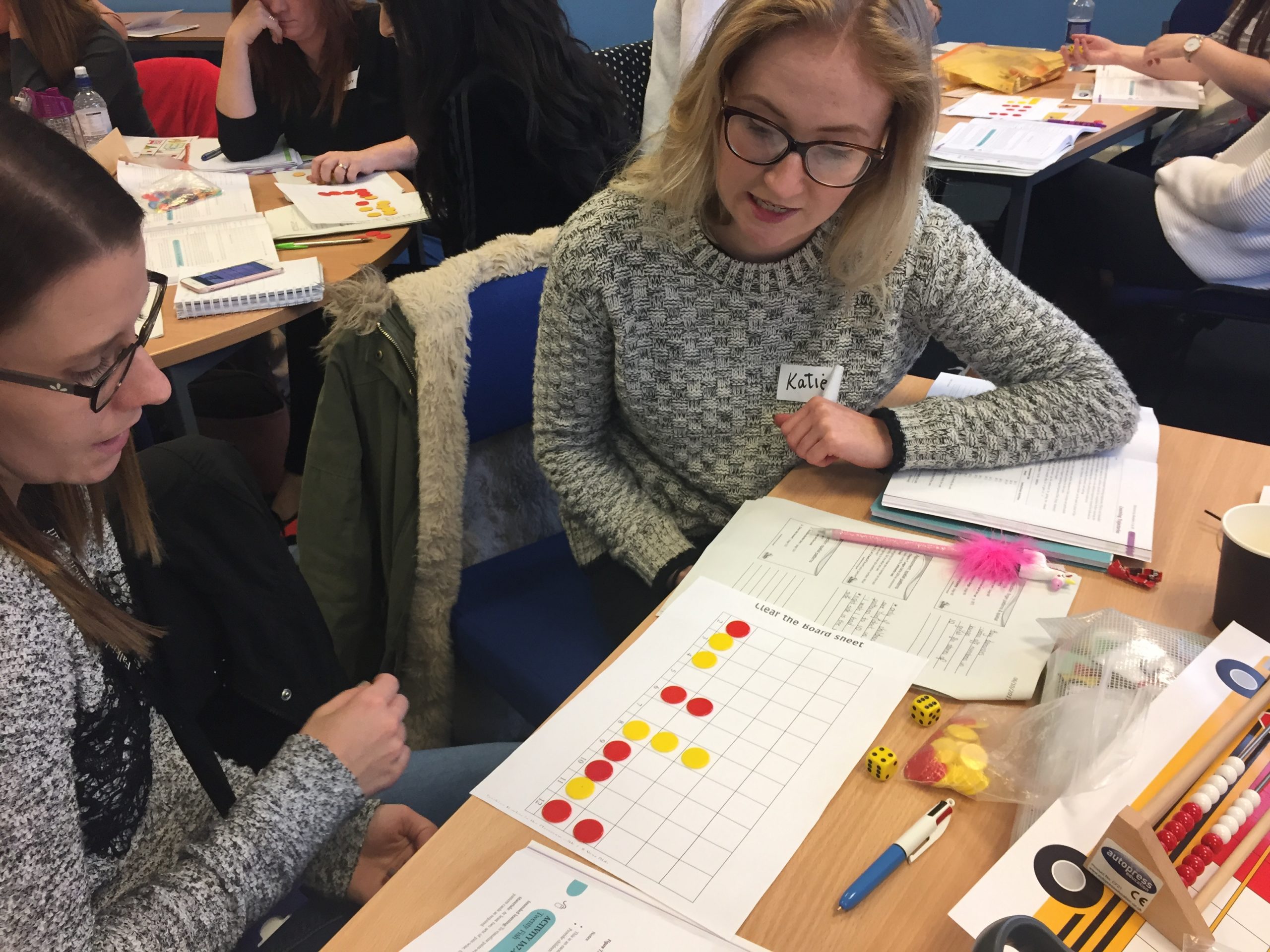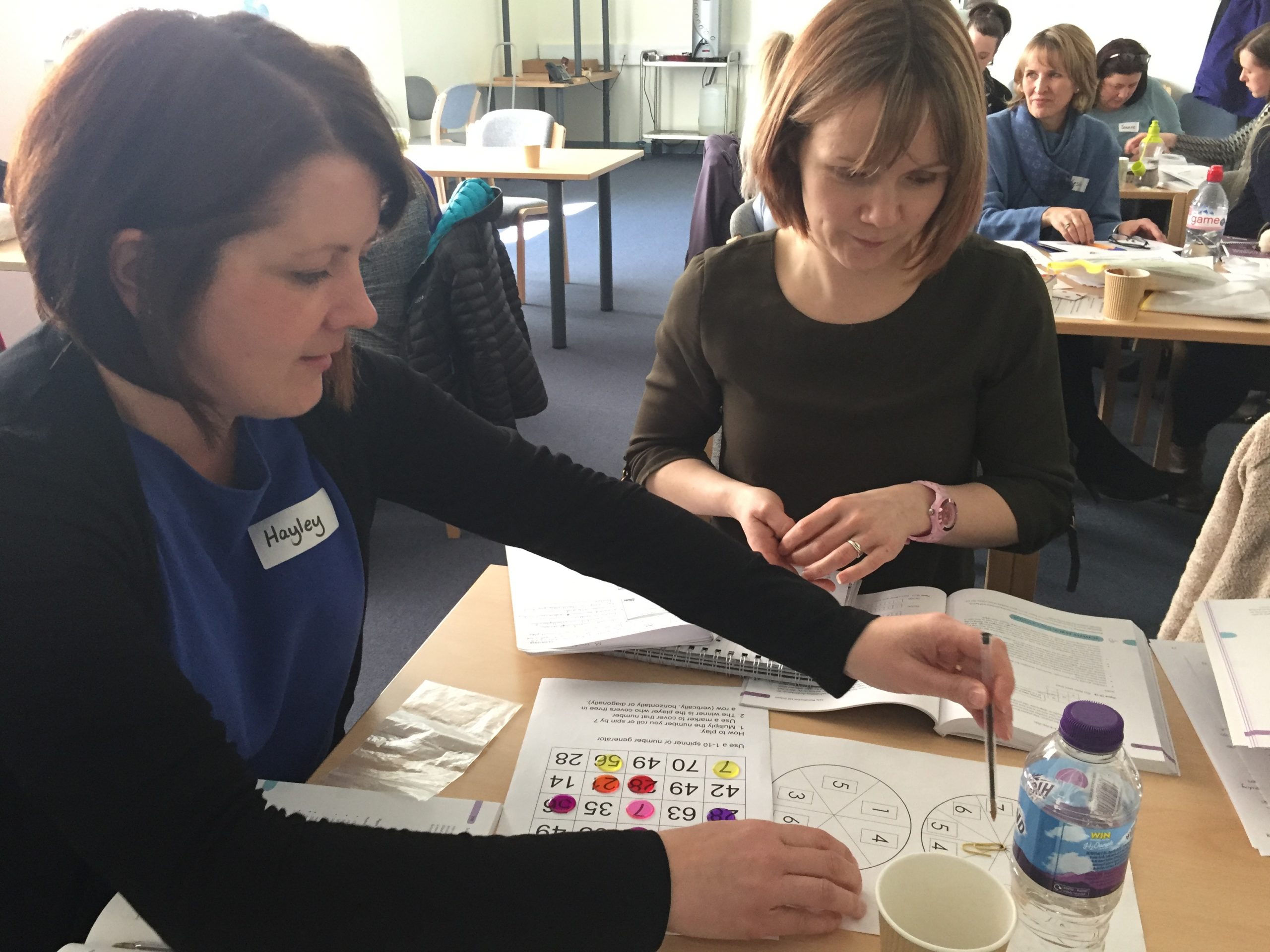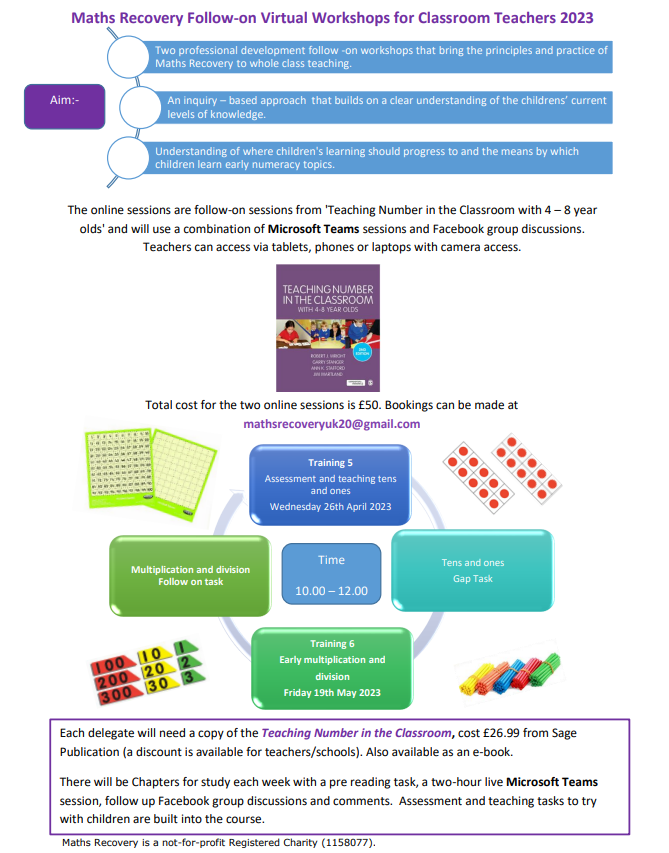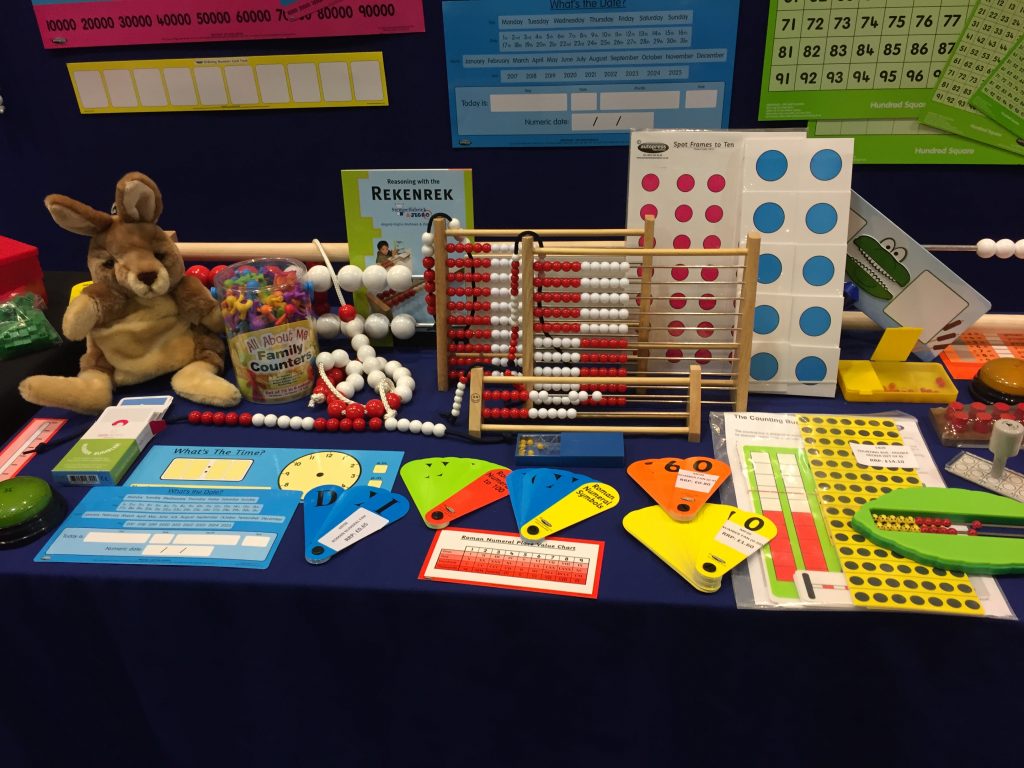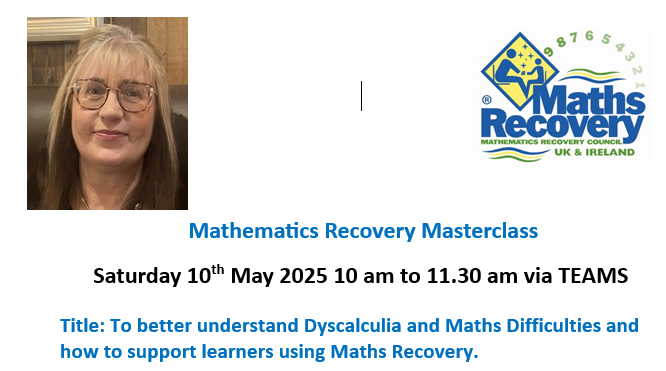 Recent Events:
Recent Events:
- 2019 MATHS RECOVERY INTERNATIONAL CONFERENCE
- Teaching Number in the Classroom for 4- to 8-year-olds
- Developing Number Knowledge Assessment, Teaching and Intervention with 7-11 year olds
- Follow on Virtual Workshop Tens and Ones and Multiplication and Division
- Virtual Workshops for Classroom Teachers
- Maths Recovery Intervention Specialist Course
Math Recovery® Efficacy and Effectiveness Research
by Pamela D. Tabor, Ph.D. (The author wishes to acknowledge the work of many in the Math Recovery® community who contributed to this body of research and reviewed drafts of this article. Bob Wright was particularly insightful in his comments and suggestions.)
Over the years, a number of studies have been conducted broadly evaluating the effectiveness of Math
Recovery® intervention and Add+VantageMR® professional development for classroom teachers and its predecessor Count Me In Too. Although several evaluations have been conducted on the effect of MathRecovery® practice in a variety of implementations internationally (Graven, Stott, Mofu, & Ndongeni,2015; Holliday, 2007, 2008; Willey, 2009; Willey, Holliday, & Martland, 2007), the purpose of this white paper is to provide an overview of research specific to the implementation within the United States of America in a chronological manner. The studies range from district-based internal evaluations and master’s theses to an IES-funded randomized control trial (RCT) external evaluation across multiple states.
Efficacy and effectiveness research are an ongoing priority of the USMRC. Considerable resources, both
human and capital, are being dedicated to this continuing effort. This white paper is a dynamic document that will be amended to reflect the USMRC’s ongoing evaluation efforts.
Recent News & Events
Mathematics Recovery Masterclass
Catherine Staunton Unsworth


